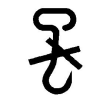| Raw sugar | [German version] |
Table of contents |
|
| General: | ||
| Product information | ||
| Packaging | ||
| Transport | ||
| Container transport | ||
| Cargo securing | ||
Product information
Product name
| German | Rohzucker |
| English | Raw cane sugar, Raw beet sugar |
| French | Sucre brut de canne, Sucre brut de betterave |
| Spanish | Azúcar de caña, Azúcar de remolacha |
| Scientific | Saccharum officinarum, Beta vulgaris var. altissima Sucrose (C12H22O11) |
| CN/HS number * | 1701 11 ff. |
(* EU Combined Nomenclature/Harmonized System)
Product description
Sugar is the name for the sweet-tasting foodstuff obtained from sugar beet or sugar cane, the products respectively being known as beet sugar or cane sugar. Chemically speaking, both beet and cane sugar are sucrose (C12H22O11). Sugar is suspected to have its origins in India, where the first sugar cane is said to have been discovered some 2500 years ago. Sugar beet cultivation, however, is a much more recent innovation.
The sugar beet (Beta vulgaris var. altissima) is a member of the goosefoot family (Chenopodiaceae). The beet consists of the crown, neck, main body (hypocotyl) and the beet tail. The main body of the beet contains stored sucrose, which is the raw material for sugar production.
Sugar cane (Saccharum officinarum) is a tropical grass which belongs to the grass family (Gramineae).
Raw sugar is a moist, coarsely crystalline mass with a sucrose content of 95 – 97%. The solid cores of the raw sugar crystals are still covered with a layer of syrup. These accompanying substances make raw sugar moist and tacky and give it its typical yellowish-brown color and malty, burnt flavor. The water content of raw sugar is 0.25 – 1.1%.
Raw sugar is an intermediate in the production of sugar.
Quality / Duration of storage
The relatively large proportions of contaminants in raw sugar should be considered normal as they are eliminated during subsequent processing.
Moist, dirty, damaged and poorly sewn bags must not be loaded.
Subject to compliance with the appropriate temperature and moisture/humidity conditions, the maximum duration of storage is not a limiting factor as regards transport.
Intended use
Raw sugar is used not only to produce consumer sugar but also without further industrial processing in breweries, the yeast industry and as a feedstuff.
Figures
(Click on the individual Figures to enlarge them.)
 Figure 1 |
 Figure 2 |
 Figure 3 |
 Figure 4 |
 Figure 5 |
Countries of origin
This Table shows only a selection of the most important countries of origin and should not be thought of as exhaustive.
| Europe | Germany |
| Africa | South Africa, Swaziland |
| Asia | Mauritius, Taiwan, Thailand, Philippines |
| America | Cuba, Brazil, Mexico, Argentina, Dominican Republic, Colombia, Peru |
| Australia | Australia, Fiji |
Back to beginning
Packaging
Raw sugar is transported both as bulk cargo and as break-bulk cargo. Raw sugar as break-bulk cargo is packaged in bags of woven natural materials (e.g. jute) or woven plastic bags with a plastic inner bag which is impermeable to water vapor and provides protection from contamination.
| Marking of packages | ||
 Keep dry |
 Use no hooks |
 Keep away from heat (solar radiation) |
Back to beginning
Transport
Symbols
 Bulk cargo |
 General cargo |
Means of transport
Ship, truck, railroad
Container transport
Bulk containers and standard containers may be used, subject to compliance with lower limits for water content of goods, packaging and container flooring.
Cargo handling
In damp weather (rain, snow), the cargo must be protected from moisture, since quality may be diminished by moisture damage (syrup formation, mold, fermentation).
High relative humidities or fog have no negative impact upon unloading operations because the raw sugar is further processed into white sugar. On the other hand, losses do arise due to caking if the relative humidity drops. Hardening has, for example, been observed to occur even during unloading at low temperatures and low humidities. In dry weather at a low relative humidity, raw sugar has been found to be so hard that problems arose during unloading, while no such problems arose in humid, hot weather. Raw sugar has also been found to be unusually hard due to low humidity in frosty conditions.
Hooks must not be used in handling bagged goods as they subject the cargo to point loads, so damaging the bags. Due to their shape, plate or bag hooks apply an area load and are thus more suitable for handling bags.
Stowage factor
| 1.17 – 1.27 m3/t (bulk cargo) [1] | |
| 1.06 – 1.28 m3/t (bags) [1] |
Angle of repose
| Lower limit: 35° | |
| Upper limit: 39° | |
| Average value: 37° |
Grain size
| Diameter 2 – 2.5 mm |
Stowage space requirements
Cool, dry
Segregation
Oiled paper, packing paper, fiber rope, thin fiber nets for bagged cargo
Cargo securing
Bagged cargo must be stowed and secured in the means of transport in such a manner that it cannot slip or shift during transport. If loss of volume and degradation of quality are to be avoided, the packages must not be damaged by other articles or items of cargo.
Back to beginning
Risk factors and loss prevention
RF Temperature
Favorable travel temperature range: no lower limit – 25°C
Agglomeration (sticking together) is promoted by relatively high temperatures (> 25°C) due to release of water vapor. Do not stow sugar near heat sources.
Temperature variations should, as far as possible, be avoided as the resultant release of water vapor and recrystallization may result in caking.
Raw sugar with a loading temperature of above 48°C should not be accepted as it may cake on cooling.
Back to beginning
RF Humidity/Moisture
Raw sugar requires particular humidity/moisture and possibly ventilation conditions (SC IV) (storage climate conditions).
| Designation | Humidity/water content | Source |
| Relative humidity | 65% | [1] |
| Water content | 0.25 – 1.1% | [1] |
| Maximum equilibrium moisture content | 55% | [1] |
Raw sugar is particularly hygroscopic due to its high ash content and readily releases water vapor and must thus be protected from all forms of moisture (seawater, rain, condensation water).
At relative humidities below the flow moisture point, raw sugar responds little to the water vapor content of the ambient air and the water content remains close to 0% (0.25 – 1.1%). Once the flow moisture point is reached at a relative humidity of 80%, the raw sugar readily absorbs water vapor, resulting in an abrupt rise in the sorption isotherm, and the sugar crystals deliquesce.
This marked hygroscopicity of raw sugar is attributable to the film of (strongly hygroscopic) molasses remaining on the sugar crystals.
Moisture reduces the concentration of the sugar. The change in sugar concentration is determined by polarization measurement (optical measurement method).
Relative humidities > 70% result in agglomeration (sticking together), syrup formation, tackiness, loss of flowability and mold and yeast growth, which cause fermentation.
At below 50%, the raw sugar may harden, cake and lose its flowability. Monolithic layers may arise which cannot be unloaded without prior loosening. Moisture and agglomeration damage may be avoided by incorporating additives.
Back to beginning
RF Ventilation
Raw sugar requires particular humidity/moisture and possibly ventilation conditions (SC IV) (storage climate conditions).
As bagged raw sugar is protected from water vapor exchange by a plastic lining, it does not normally need to be ventilated.
However, if it is transported as bulk cargo, note should be taken of the behavior of a cargo block in the event of temperature changes:
| transport from temperate latitudes to the tropics = travel from cold to hot: the cargo block is heated from the outside, resulting in water vapor transport from the outside to the cold core, which causes caking of the outer layers while the inner layers display wetting phenomena (syrup formation).  |
|
| transport from the tropics to temperate latitudes = travel from hot to cold: if the cargo block cools down from the outside, resulting in water vapor transport from the warm core to the outside, wetness and mold may occur there while inside the release of water vapor by the warm core results in caking phenomena (loss of flowability).  |
On short voyages, ventilation need not be provided or, if provided, must not be too intense, so that the initial relative humidity and temperature conditions are maintained for as long as possible. On longer voyages (e.g. Cuba to Europe), return air ventilation may be provided to prevent mold growth on the bags, but the removal of moisture may result in caking.
Back to beginning
RF Biotic activity
Raw sugar displays 3rd order biotic activity.
It belongs to the class of goods in which respiration processes are suspended, but in which biochemical, microbial and other decomposition processes still proceed.
Back to beginning
RF Gases
Sugar in which alcoholic fermentation is under way may result in evolution of CO2. This may be so severe that life-threatening CO2 concentrations arise in the holds or containers. Before anybody enters the hold, it must be ventilated and a gas measurement carried out.
Back to beginning
RF Self-heating / Spontaneous combustion
Unextinguished cigarette ends may cause sugar fires, which are greatly feared because they are difficult to extinguish. Ash acts as a catalyst in combustion. Sugar fires are extinguished with CO2 or chemical extinguishing agents.
Smoking is absolutely prohibited in holds and containers.
Back to beginning
RF Odor
| Active behavior | Due to the layer of molasses around the crystal core, raw sugar has a very slight, pleasant malty odor and must thus not be stored together with white sugar. |
| Passive behavior | Raw sugar is highly sensitive to any foreign odors and should thus not be stored together with odor-emitting products. |
Back to beginning
RF Contamination
| Active behavior | Raw sugar causes contamination by forming dust and crystals. |
| Passive behavior | Raw sugar is sensitive to dust, dirt, fats and oils. The holds or containers must accordingly be clean and in a thoroughly hygienic condition before loading. Wooden flooring must be air-dry (water content max. 15%) after cleaning, as there is otherwise a risk of syrup formation in the lower layers. Holds and containers must not be contaminated by previous cargoes, e.g. potash, otherwise the raw sugar can no longer be used directly (i.e. without further processing to white sugar) in breweries, in the yeast industry and as a feedstuff. |
Back to beginning
RF Mechanical influences
Point loads applied for example by hooks may result in damage (tears) to the bags and thus to losses of volume. Plate or bag hooks, which, due to their shape, distribute the load and reduce the risk of damage, should thus be used.
Back to beginning
RF Toxicity / Hazards to health
No risk.
Back to beginning
RF Shrinkage/Shortage
Weight losses of 1% due to release of water vapor are normal for bulk loading.Caking causes loss of volume due to adhesion to the ship’s side/container walls. Incorrect handling of bagged product may, however, result in trickle losses.
Back to beginning
RF Insect infestation / Diseases
When exposed to moisture, raw sugar has a tendency to grow mold and form syrup.
It may also suffer depreciation as the result of infestation by rats, mice, ants, flies and silverfish.
Back to beginning
